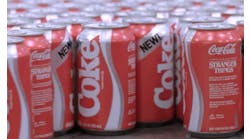Judging from the advertising campaigns by major corporations these days, it seems they've all gone "green." That's the clichd term synonymous with being environmentally responsible. The truth is, many of these so-called green initiatives are either driven by regulatory mandates or are manufacturers' attempts to win over the public with their corporate citizenship. Often lost in such self-serving cheerleading are the facts behind the cost-reduction potential of alternative energy in manufacturing operations.
To separate the wheat from the chaff, IndustryWeek asked James Lee, an associate professor in the Golisano Institute for Sustainability at the Rochester Institute of Technology, about the pros and cons of alternative energy usage in manufacturing. As a member of the research faculty, Lee is a fuel-cell team leader responsible for coordinating all aspects of fuel-cell research. He also conducts analysis of industrial processes to determine the feasibility of energy-savings modifications, and works with industrial suppliers to create products that minimize lifecycle costs through sustainable design practices. Previously, Lee served as a senior research engineer within General Motors Fuel Cell Activities.
IW: What are some of the main types of alternative energy being used in manufacturing applications?
Lee: The energy used by manufacturers can be broken down into two broad categories: electricity and thermal energy (heat). Manufacturing companies are working in both of these areas to reduce consumption and expand the use of alternatives to fossil fuel. In addition to working with utility companies to increase the supply of electricity from renewable sources, many manufacturers are investing in combined heat and power (CHP) systems that produce both electricity and heat for their manufacturing processes. CHP systems increase energy efficiency by making better use of the energy. Using a CHP system also enables companies to produce electricity directly from alternative fuel sources such as biofuels, hydrogen and solid municipal waste. Companies are also burning alternative fuels directly in boilers to produce the process heat.
IW: What types of manufacturers are utilizing alternative energy?
Lee: Industries such as agriculture, food processing, metal refining, paper manufacturing and the chemical industry are heavily involved in developing alternative energy strategies, but industries like product assembly and printing are not as engaged.
IW: Where is the greatest growth potential for alternative energy in manufacturing operations?
IW: What are the benefits for each type of alternative energy source you've mentioned? What are the potential energy savings?
Lee: A benefit of all types of alternative energy is the reduction in petroleum and natural gas consumption. Additional benefits may include increased efficiency, reduced carbon emissions and reduced cost. Combined heat and power systems maximize energy efficiency -- 10% to 50% -- and have the potential to reduce costs.
IW: What are some of the challenges that still need to be overcome before alternative energy becomes a reality for the majority of manufacturers?
Lee: The primary challenge for all types of alternative energy is cost, and in particular it's cost relative to conventional fossil fuels. There is an abundance of agricultural waste that could be converted to biofuel, but the cost of biofuel is more than petroleum-based fuels, so there is a limited biofuel market. The same can be said for municipal waste, solar energy, wind power, etc. Even though the source of the energy is often free, the processing required to convert it to a usable form is often expensive due to the cost of equipment, limited production scale, etc.
One of the silver linings of the recent increase in the cost of petroleum is that alternative energy became more cost competitive. In addition to cost, a substantial challenge for biofuels is to develop a process for extracting sufficient amounts of fuel from non-food sources of biomaterials. Progress is being made at RIT and other institutions, but more work is needed.
Converting solid municipal waste to usable energy also has considerable challenges, including the relatively low energy content and variability of the incoming waste, and ensuring no toxic substances are released to the environment. Similar issues exist when using process scrap as energy. One innovative way of overcoming some of the challenges with using process scrap as an alternative energy source is to co-locate companies that can benefit from each others' waste stream.
See Also



